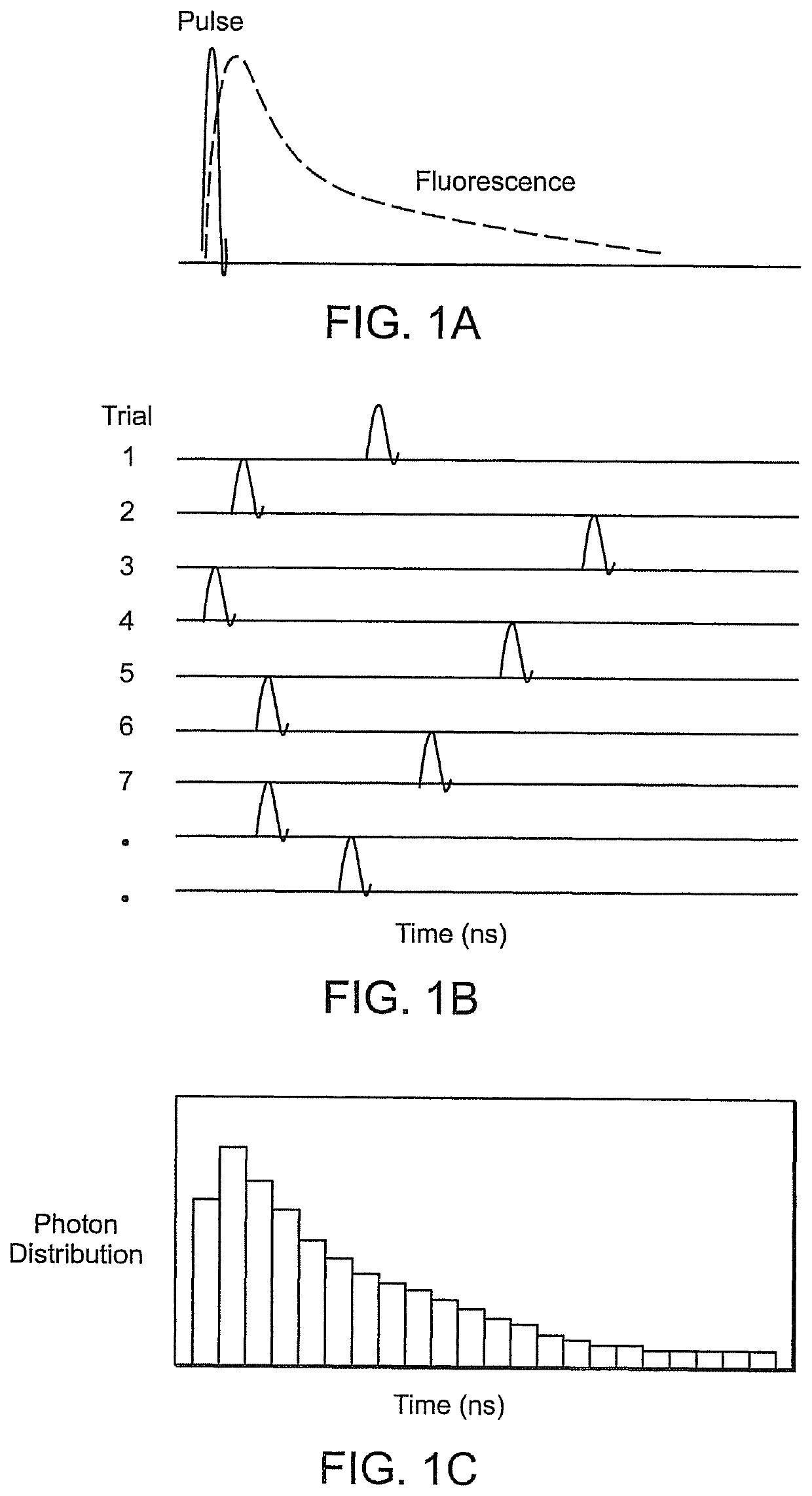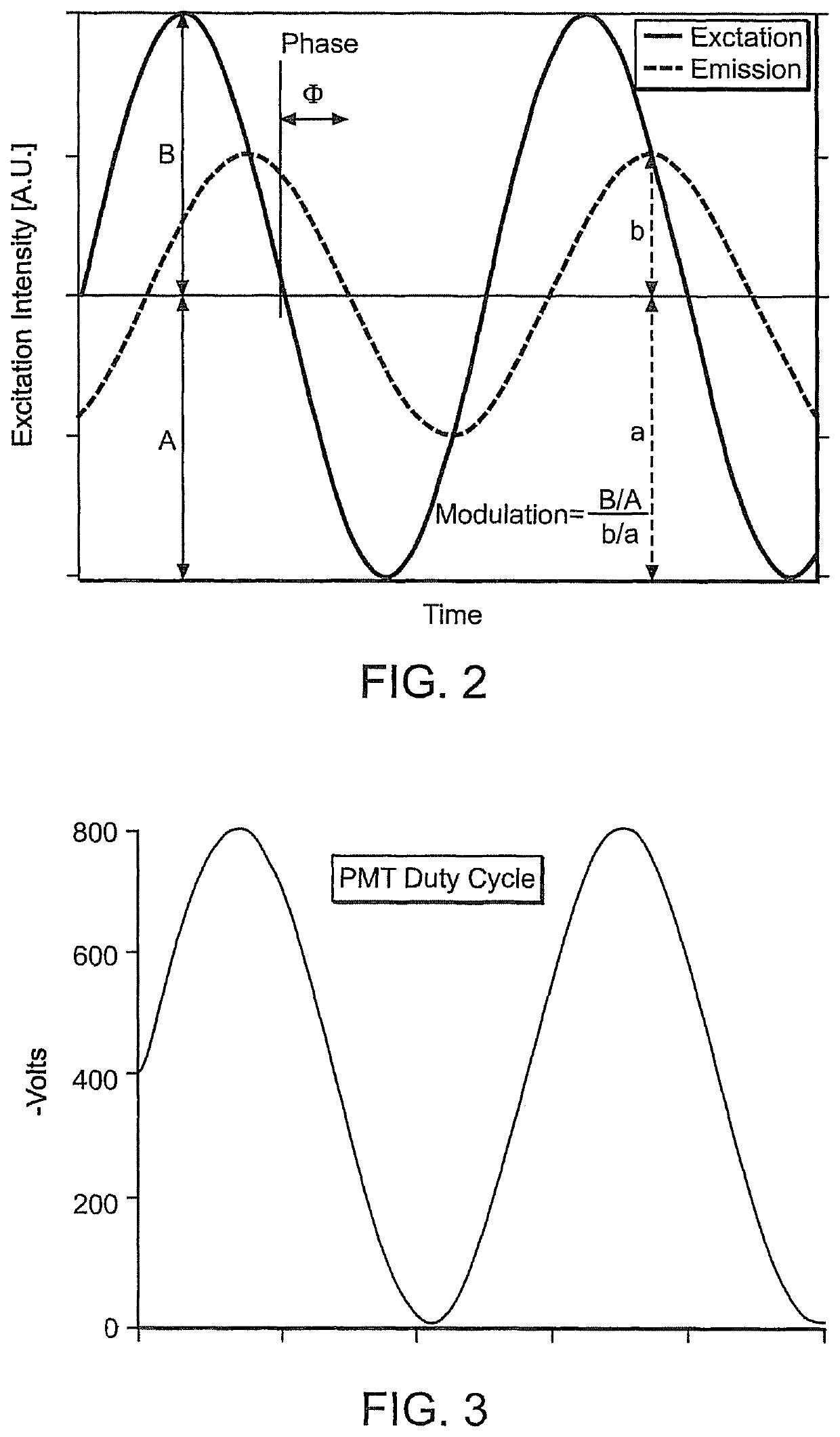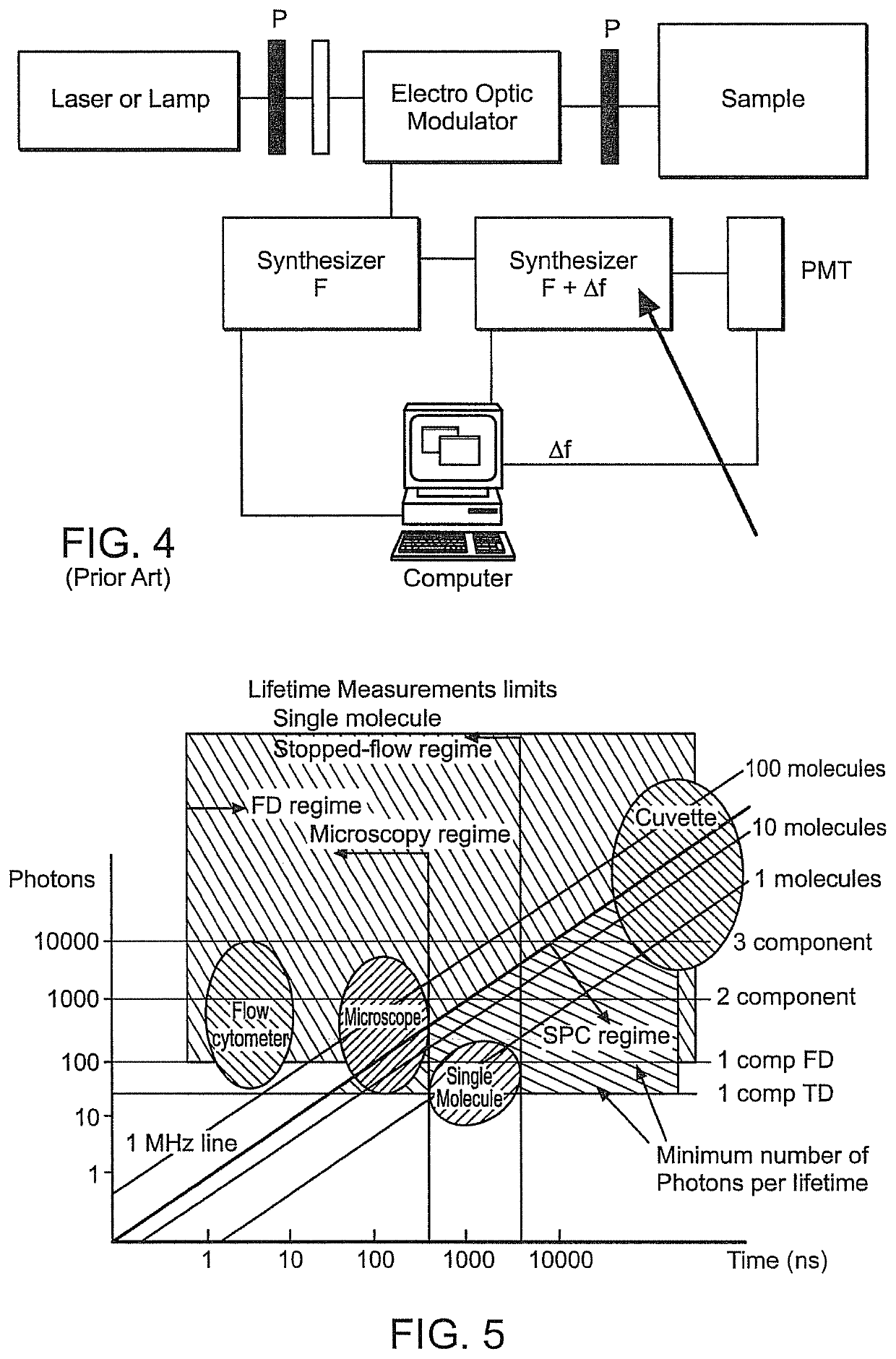Devices and methods for direct-sampling analog time-resolved detection
a technology of time-resolved detection and analog signal, which is applied in the direction of optical radiation measurement, fluorescence/phosphorescence, radio frequency amplifier, etc., can solve the problems of requiring specialized electronic and modulated sources, modulated detectors, and current methods that are relatively expensive, and achieve cost-effective effects and increased instrumentation
- Summary
- Abstract
- Description
- Claims
- Application Information
AI Technical Summary
Benefits of technology
Problems solved by technology
Method used
Image
Examples
Embodiment Construction
[0045]Preferred embodiments of the present invention are described below with reference to the accompanying drawings, in which like reference numerals represent the same or similar elements.
[0046]The subject invention provides an improved method for time-resolved detection that combines the dynamic range of frequency domain (FD), the sensitivity of time-correlated single photon counting (TCSPC), while being able to simultaneous acquire all harmonics in parallel in a single measurement. The subject invention achieves several advantages and benefits including, but not limited to: sensitivity improvement of a factor of two to four over traditional frequency domain approaches, simultaneous acquisition of all harmonics; high speed acquisition faster than the both the frequency domain and TCSPC; the ability to handle high signal levels; and low cost and scalability.
[0047]According to the subject invention, in a fluorescence application, for example, a signal is sampled faster than the dec...
PUM
| Property | Measurement | Unit |
|---|---|---|
| illumination frequency | aaaaa | aaaaa |
| frequency | aaaaa | aaaaa |
| time | aaaaa | aaaaa |
Abstract
Description
Claims
Application Information
 Login to View More
Login to View More - R&D
- Intellectual Property
- Life Sciences
- Materials
- Tech Scout
- Unparalleled Data Quality
- Higher Quality Content
- 60% Fewer Hallucinations
Browse by: Latest US Patents, China's latest patents, Technical Efficacy Thesaurus, Application Domain, Technology Topic, Popular Technical Reports.
© 2025 PatSnap. All rights reserved.Legal|Privacy policy|Modern Slavery Act Transparency Statement|Sitemap|About US| Contact US: help@patsnap.com



